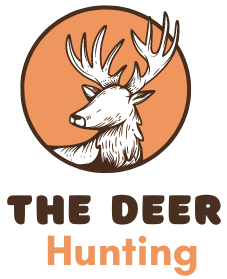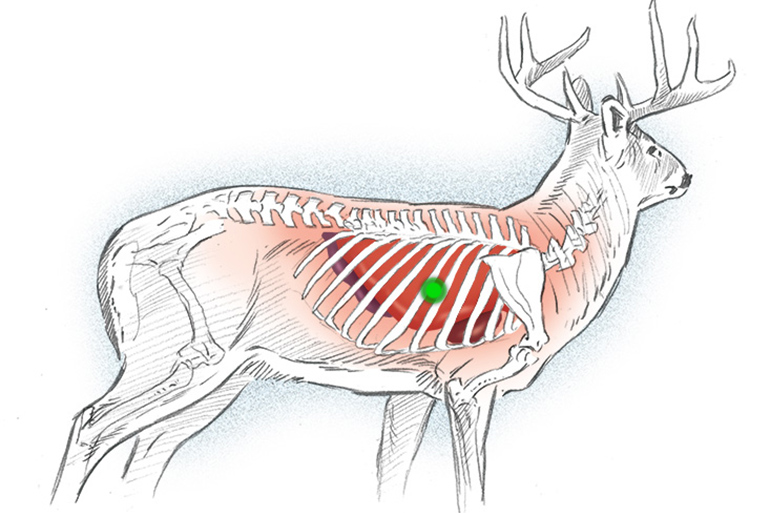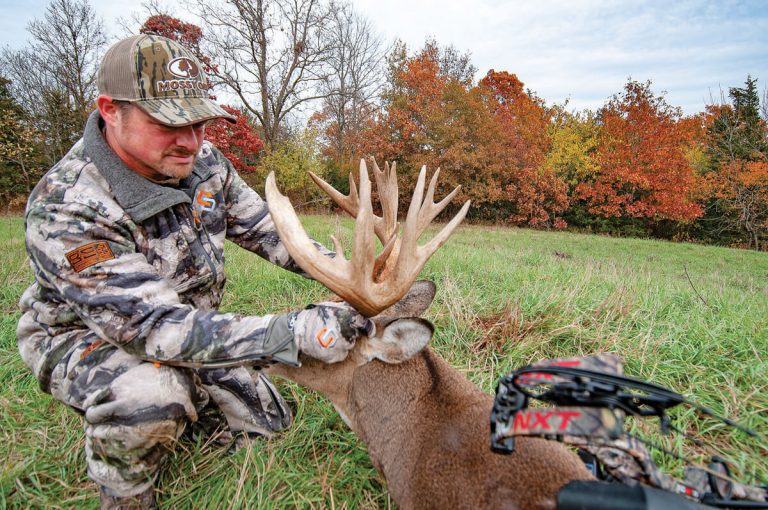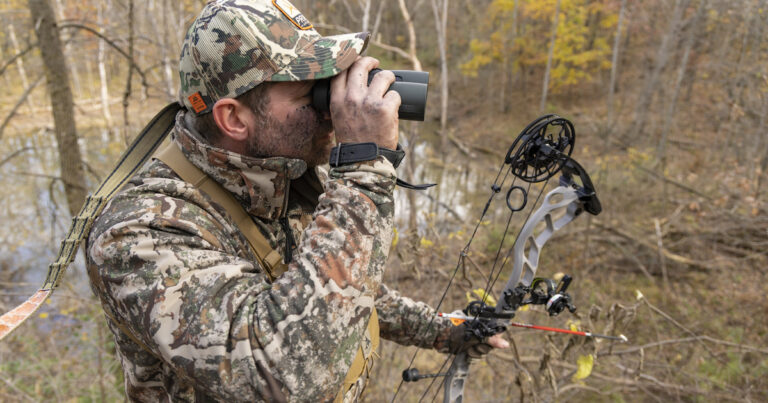Arrow Placement on Whitetail Deer: Master the Perfect Shot
Arrow placement on whitetail deer is crucial for a successful hunt. Accurate shots ensure a humane kill and quick recovery.
Understanding the best spots to aim on a whitetail deer can make all the difference. Hunters need to know the anatomy of the deer and how it moves. This knowledge helps in making precise shots that lead to ethical hunting practices.
With the right arrow placement, you can increase your chances of a clean, effective shot. Let’s explore the key areas to aim for and why they are important for your next hunting trip.
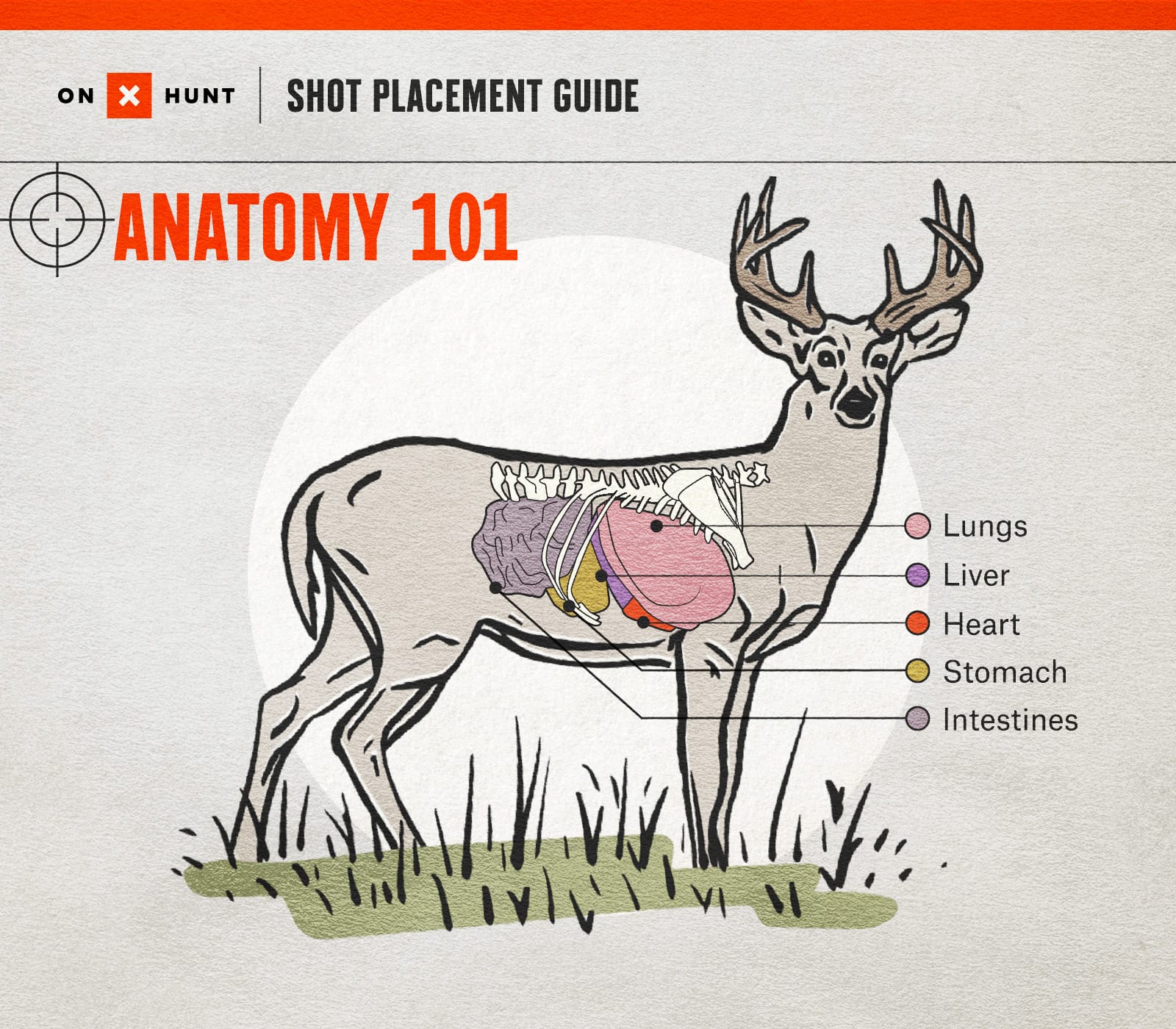
Credit: www.onxmaps.com
Introduction To Arrow Placement
Hunting whitetail deer requires skill and precision. Arrow placement is crucial for a successful hunt. Understanding where to aim ensures a quick, ethical kill. Hunters must know the deer’s anatomy to target the vital organs effectively.
Importance Of Accuracy
Accuracy is key in hunting. A well-placed arrow ensures a clean kill. This reduces the animal’s suffering. Missing the target can cause injury, leading to prolonged pain. A precise shot increases the chances of finding the deer quickly.
Overview Of Whitetail Deer Anatomy
Whitetail deer anatomy is complex but can be understood with study. The vital organs are the heart, lungs, and liver. These organs lie within the chest cavity. Knowing their locations helps in aiming accurately.
The heart is a small target, located just behind the front leg. The lungs are larger and sit above the heart. The liver is towards the back of the chest. Aiming for the lungs provides the best chance of a quick kill.
Choosing The Right Equipment
Choosing the right equipment is crucial for a successful hunt. Proper gear ensures accurate shots, ethical kills, and a better hunting experience. Let’s explore the essential components: the best bow and the proper arrows for hunting whitetail deer.
Selecting The Best Bow
Choosing the best bow involves considering various factors. The bow’s draw weight, draw length, and type are key aspects. Here are some tips:
- Draw Weight: Ensure the bow’s draw weight matches your strength. A draw weight between 40-60 pounds is ideal for most hunters.
- Draw Length: Your draw length should be comfortable. Measure from fingertip to fingertip and divide by 2.5 to find the right length.
- Bow Type: There are compound, recurve, and longbows. Compound bows are popular for their power and accuracy.
Additionally, consider the bow’s weight and balance. A lighter bow is easier to carry, but a heavier bow can offer more stability. Test different bows to find what suits you best.
Choosing The Proper Arrows
Proper arrows are as important as the bow. The right arrows ensure better flight and penetration. Consider these factors:
- Arrow Material: Arrows come in carbon, aluminum, and wood. Carbon arrows are durable and offer consistent performance.
- Arrow Length: Match the arrow length to your draw length. Too short or too long can affect accuracy.
- Arrow Spine: Spine refers to the arrow’s flexibility. A proper spine rating ensures the arrow flies straight.
Also, choose the right broadheads. Fixed-blade broadheads are reliable, while mechanical broadheads offer better aerodynamics. Ensure your broadheads are sharp for clean kills.
| Factor | Consideration |
|---|---|
| Draw Weight | 40-60 pounds |
| Draw Length | Comfortable length |
| Bow Type | Compound, Recurve, Longbow |
| Arrow Material | Carbon, Aluminum, Wood |
| Arrow Length | Matches draw length |
| Arrow Spine | Proper flexibility |
By carefully selecting your bow and arrows, you increase your chances of a successful hunt. Happy hunting!
Understanding Deer Behavior
Understanding deer behavior is critical for successful hunting. Whitetail deer have specific habits and routines that, when recognized, can help you make precise shots. This knowledge is especially important for proper arrow placement.
Identifying Movement Patterns
Observing deer movement patterns is essential for pinpointing their travel routes. Whitetail deer typically move from bedding areas to feeding spots and back. They often use the same trails each day.
Look for deer tracks, droppings, and rubs on trees. These signs indicate frequently used paths. Deer are most active during dawn and dusk, known as crepuscular activity. Plan your hunts around these peak movement times.
Recognizing Feeding Habits
Understanding what deer eat can help locate them. Whitetail deer have diverse diets that change with the seasons. In spring and summer, they prefer green plants, fruits, and crops. During fall and winter, their diet shifts to acorns, nuts, and woody plants.
Set up near food sources such as agricultural fields, oak trees, and berry bushes. Pay attention to seasonal changes. This knowledge can improve your chances of encountering deer.
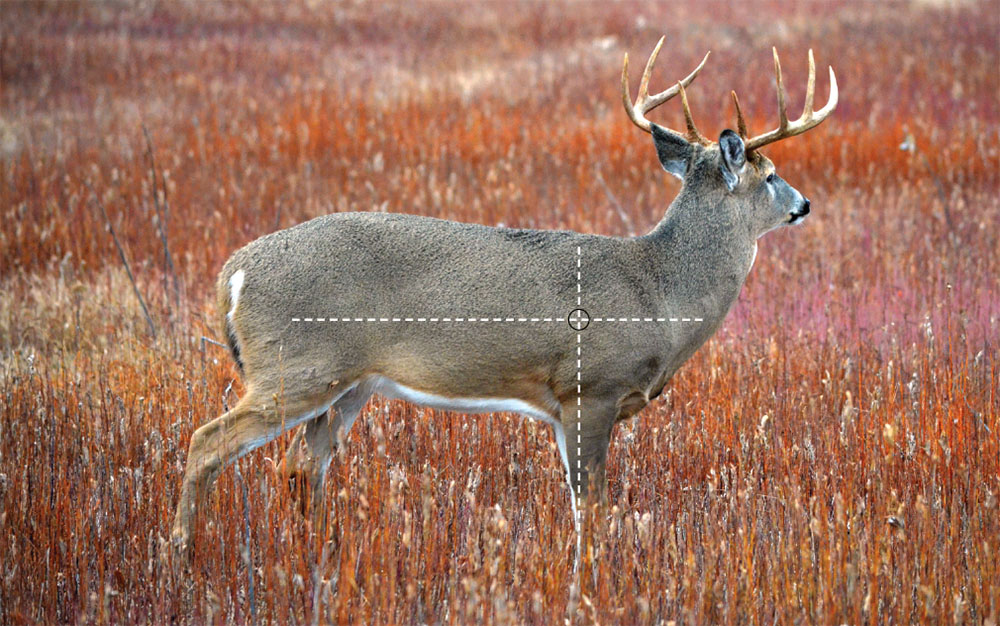
Credit: deerassociation.com
Optimal Shot Placement
When aiming to hunt whitetail deer, understanding optimal shot placement is crucial. Proper arrow placement ensures a quick and ethical kill.
Vital Zones On A Whitetail Deer
Knowing the vital zones on a whitetail deer is essential for successful hunting. The key areas to target are the heart and lungs.
Angles And Distances
Consider the angles and distances when aiming at a whitetail deer. Aim for broadside shots within 20-30 yards for optimal accuracy.
Techniques For A Steady Aim
Achieving a steady aim is essential for accurate arrow placement on whitetail deer. Whether you are a beginner or an experienced hunter, mastering a few key techniques can improve your success rate. Focus on your stance, grip, and breathing to maintain stability and precision.
Proper Stance And Grip
A proper stance is the foundation of a steady aim. Stand with your feet shoulder-width apart. Distribute your weight evenly on both feet. Keep your knees slightly bent for flexibility and balance.
Grip the bow firmly but not too tight. A relaxed grip reduces tension in your arm. Place your hand on the bow’s grip with a slight angle. This helps in aligning your shot. Ensure your elbow is slightly bent and not locked.
| Aspect | Key Points |
|---|---|
| Feet Position | Shoulder-width apart |
| Weight Distribution | Even on both feet |
| Knees | Slightly bent |
| Grip | Firm but relaxed |
| Elbow | Slightly bent |
Breathing Control
Control your breathing to keep your aim steady. Take a deep breath and hold it briefly. Exhale slowly and steadily. Time your shot with your exhale. This reduces body movement and helps keep your focus.
Practice deep breathing exercises regularly. This helps in calming your nerves and improving your shot accuracy. Remember to stay calm and composed. A relaxed mind leads to a steady aim.
- Deep breath in
- Hold briefly
- Slow, steady exhale
- Time shot with exhale
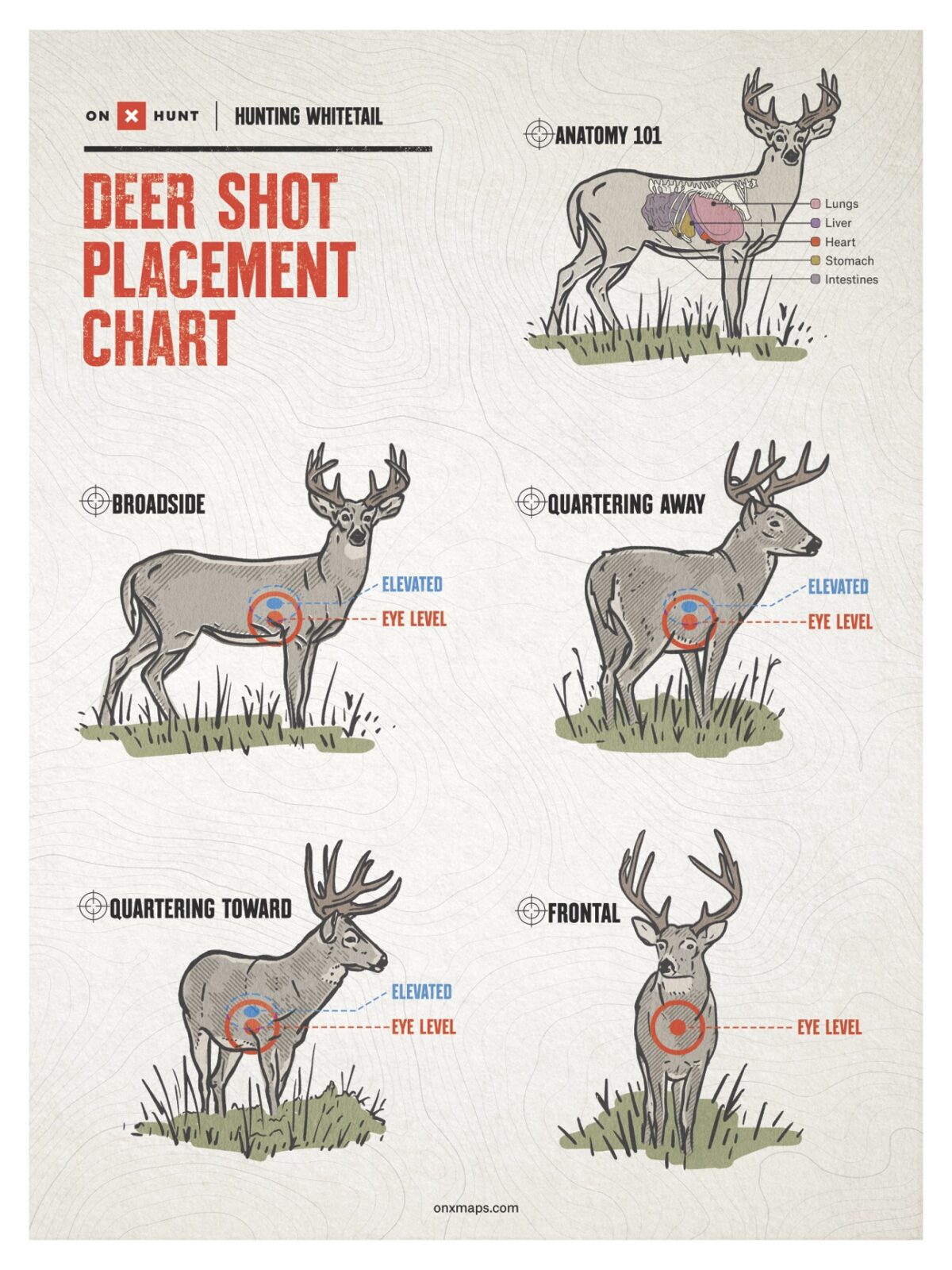
Credit: www.onxmaps.com
Ethical Considerations
Hunting whitetail deer demands a high level of responsibility. Ethical considerations play a crucial role in ensuring the hunt is carried out humanely. This involves making decisions that respect the animal and the environment. Understanding ethical practices helps in making the right choices during the hunt.
Ensuring A Quick Kill
A quick kill is vital. It reduces the deer’s suffering. Aim for vital organs like the heart or lungs. These areas ensure a rapid loss of consciousness. This leads to a quick and humane death. Proper shot placement is essential. It helps in achieving this goal effectively.
Practice makes perfect. Regularly practice your archery skills. This ensures precision during the actual hunt. The more accurate the shot, the quicker the kill. Ethical hunters prioritize this skill development.
Minimizing Animal Suffering
Minimizing suffering is a key part of ethical hunting. Avoid shots that cause prolonged pain. Non-lethal shots can lead to unnecessary suffering. They may also result in a slow death. Be aware of the deer’s anatomy. This knowledge helps in making the right shot.
Use appropriate equipment. High-quality arrows and bows make a difference. They enhance the shot’s effectiveness. Ensure your gear is well-maintained. This prevents malfunctions that could cause suffering. Ethical hunting is about respect. Respect for the animal and the sport.
Dealing With Missed Shots
Every hunter experiences missed shots. It’s a reality of the sport. A misplaced arrow can mean a wounded deer and a challenging tracking process. Understanding how to handle these situations is crucial.
Tracking Wounded Deer
First, stay calm. Panicking can lead to poor decisions. Start by marking the spot where the deer was hit. This helps you track the blood trail more effectively. Look for blood, broken arrows, or tracks. Each clue can guide you to the wounded deer.
Use your knowledge of deer behavior. Wounded deer often head for water or thick cover. Check nearby water sources or dense woods. Move slowly and quietly. This reduces the risk of spooking the deer further.
Learning From Mistakes
Missed shots provide valuable lessons. Review the shot setup and your form. Was there a distraction? Was your aim steady? Identifying these factors helps improve future shots.
Practice consistently. Regular practice builds muscle memory and confidence. Try different angles and distances. This prepares you for various hunting scenarios. Also, consider seeking advice from experienced hunters. They can offer insights and tips from their own experiences.
Practice And Improvement
Improving arrow placement on whitetail deer requires consistent practice. It is important to refine your skills to increase your success rate. Effective practice includes regular training drills and analyzing your performance. Both are key to becoming a better bowhunter.
Regular Training Drills
Regular training drills help you develop muscle memory. They ensure you can shoot accurately under pressure. Here are some effective drills:
- Blind Bale Shooting: Focus on form without aiming. This builds muscle memory.
- Target Practice: Shoot from different distances. This improves your range estimation.
- Simulated Hunting: Practice shooting from a tree stand or blind. This prepares you for real-life scenarios.
Make a schedule. Practice at least three times a week. Consistency is key.
Analyzing Performance
Analyzing your performance helps identify areas for improvement. Here are some steps:
- Record Your Shots: Use a notebook or an app. Track each shot’s placement.
- Review Your Form: Check your stance, grip, and release. Look for patterns in your misses.
- Seek Feedback: Ask experienced hunters for advice. They can provide valuable insights.
Use this information to adjust your training drills. Focus on your weaknesses. This will help you improve faster.
| Drill | Purpose | Frequency |
|---|---|---|
| Blind Bale Shooting | Build Muscle Memory | 3 times/week |
| Target Practice | Improve Range Estimation | 3 times/week |
| Simulated Hunting | Real-life Scenarios | 2 times/week |
Consistent practice and performance analysis are essential. They help you become a skilled bowhunter. Focus on these aspects. You will see improvement in your arrow placement on whitetail deer.
Frequently Asked Questions
Where To Aim On A Whitetail Deer?
Aim for the vital organs, specifically the heart and lungs, for a quick and humane kill.
What Is The Best Shot Angle?
The broadside shot angle is the best, offering a clear path to vital organs.
How To Ensure A Clean Kill?
Ensure a clean kill by practicing accurate shot placement and understanding deer anatomy.
Does Arrow Placement Affect Meat Quality?
Yes, proper arrow placement avoids damaging edible meat, preserving the quality for consumption.
Conclusion
Perfect arrow placement is key for a successful hunt. Aim for the vital organs. Practice your shots regularly. Understand the deer’s anatomy well. Ethical hunting ensures a quick, humane kill. Make every shot count. Happy and safe hunting!
